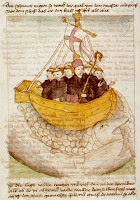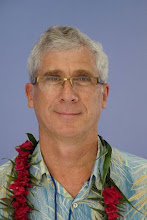 The community of Aidan and Hilda is a dispersed, ecumenical body of Christians who seek to cradle a Christian spirituality for today that renews the church and heals the land. It welcomes people of all backgrounds and countries who wish to be wholly available to the Holy Trinity, and to the way of Jesus as revealed to us in the Bible. In the earthing of that commitment, members draw inspiration from Celtic saints such as Aidan and Hilda. Members follow a Way of Life, with a soul friend, based on a rhythm of prayer and study, simplicity, care for creation and mission; and they seek to weave together the separated strans of Christianity. The work of the Community is the work of each member. There is no ready-made community on one's doorstep. Co-unity with other members is rooted in the knowledge that they follow the Community's Way and that this reflects their deepest calling.
The community of Aidan and Hilda is a dispersed, ecumenical body of Christians who seek to cradle a Christian spirituality for today that renews the church and heals the land. It welcomes people of all backgrounds and countries who wish to be wholly available to the Holy Trinity, and to the way of Jesus as revealed to us in the Bible. In the earthing of that commitment, members draw inspiration from Celtic saints such as Aidan and Hilda. Members follow a Way of Life, with a soul friend, based on a rhythm of prayer and study, simplicity, care for creation and mission; and they seek to weave together the separated strans of Christianity. The work of the Community is the work of each member. There is no ready-made community on one's doorstep. Co-unity with other members is rooted in the knowledge that they follow the Community's Way and that this reflects their deepest calling.So opens the Rule of the Community of Aidan and Hilda. I have been rereading and reflecting over the Rule for the past few days. In my opinion, this document is one that every Celtic Christian should read, refer to regularly throughout the year, and attempt to one's best to put into practice. For these reasons, I have created a link to this Community on the front page of this blog and also here.
Rules of life are not a new thing, especially with the history of the Church. And in the long history of the church there have been dozens, and some are more famous than others. As I write this entry, I recall several famous Rules of life including the Benedictine (the most famous Rule of all), as well as the Franciscan, Domincan, and Augustinian. The Celts, true to form, developed a Rule of life themselves, and the most famous Celtic Monastic Rule was that of St. Columbanus (c. 550-615) who wrote the Regula Monachorum and Regula coenobialis. You can read translations of these in Celtic Spirituality (1999) from the Classics of Western Spirituality series, or through the links on the front page. These are worthwhile from a historical and theological perspective, however they seem very extreme for today's world. That is not to say that a Rule of life is invaluable. On the contrary, a Rule is valuable because it helps keeps one focused in one's Christian experience. A rule helps to keep one "centered" on what is really important as the secular world and culture in which we live, seek to distract, and in truth, entertain. A Rule provides "rules" in the best sense of that term, and helps remind us of "first things", and of what is really important in life. I have experienced this truth in another setting. As a substance abuse counselor, I have noted how those who genuinely follow "the program" and seek to apply its principles, are those who typically remain sober. What to have a positive spiritual experience? Begin practicing one of the great Christian Rules of life!
Let me recommend the Rule of the Community of Aidan and Hilda. What else would you expect from a Celtic blog? First, let me provide a brief overview of the Rule, which includes ten elements. These themes include; study and application of the Celtic Christian Way; the Anamchara or "Soul Friend"; a daily rhythm of prayer, work, and rest; intercessory Prayer; simplicity of Lifestyle; care for and affirmation of Creation; wholeness not fagmentation; opnness to the Wind of the Spirit; unty and Community; and mission.
The danger to any religious practice is to become overfocused on one element or persepctive. A Rule is a gentle reminder that spirituality is multi-demensional and affects every aspect of life's experience. A Rule helps to keep us whole, as well as holy. And perhaps most importantly in our culture of instant gratification, we are reminded that the "good things" in life such as true love or spiritual depth neither happen overnight or quickly. Rather, as one of my spiritual directors used to remind me, "the mill of God grinds exceedingly slow, but they grind exceedingly fine". True spirituality does not take place overnight. Rather, it is something which requires practice and experimentation, and is a goal, a destination which takes all of one's life. What else would you expect from a relationship with God?
We live in a time of spiritual fads and counterfits, replete with all kinds of false promises.One of the helpful things of the Celtic spiritual experience, is it's time tested ways. People have been practicing it's Rule of life for centuries, and with successful results. Today too, we need a Rule of life, which helps give shape and wholeness to our Christian experience, preventing us from being one dimensional Christians. Each of us would do well to begin following the Rule from Aidan and Hilda.







